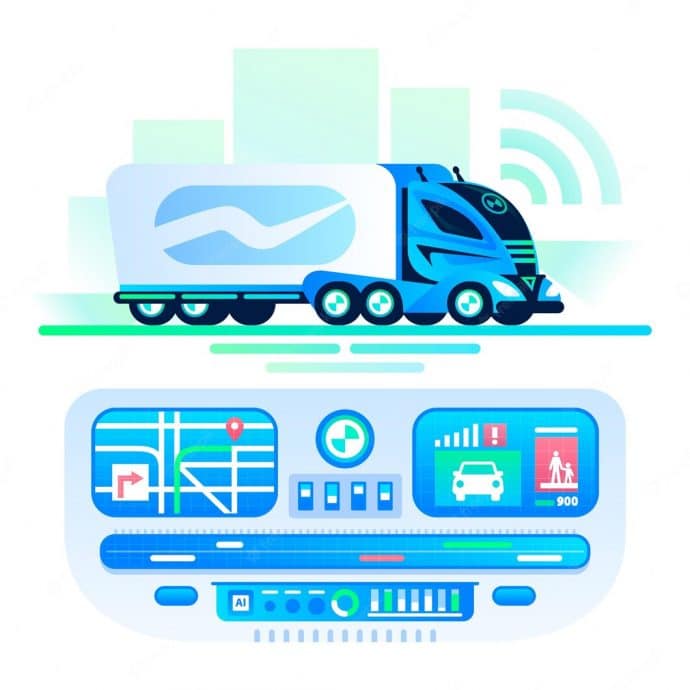Introduction: AI disrupting trucking
AI disrupting trucking: In most instances, the robots would be expected to take on the most mundane, most dangerous jobs first. It is no different when it comes to trucking.
The autonomous driving engineers focus entirely on long-haul freight; the interstate runs without much complexity except for a slow curve or an E-ZPass lane. These are some of the simpler challenges on the self-driving spectrum.
Also Read: Amazon is using AI in almost everything it does.
Infrastructure may be the biggest hurdle for the industry to overcome. In general, just getting from a factory or distribution center to an interstate is usually far more complicated than the next several hundred miles. Once the machine reaches the end of the interstate, the same principle applies. A possible solution would be for trucking companies to set up transfer stations at either end of the trip, so that drivers can take on the tricky first leg of the trip and then hitch their cargo up to robot rigs to handle the tiresome middle portion of the journey.
Also Read: Could AI Replace Humans?
UPS has been making self-driving delivery runs in Arizona as part of a new partnership with the start-up TuSimple. VICE’s Krishna Andavalou saw how the autonomous technology works — and met with the drivers it would impact on Future of Work.
Source: YouTube | HBO | VICE
The trucking industry has long faced a driver shortage, in part because of high risk, low pay and long hours. The rise of autonomous vehicles could alleviate that problem–but it could also eliminate jobs for a population of older men who lack college degrees and might have difficulty finding new work. Paul Solman explores the conundrum for our special Future of Work series for PBS.
Source: YouTube | PBS
Self-driving trucks may have once seemed like a futuristic vision. But in recent years, they’ve begun taking to the road — and their implications for the labor market, and long-haul truck drivers in particular, could be enormous.
Source: YouTube | Frontline
Also Read: Self taught AI will be the end of us
AI disrupting trucking industry
According to a study out of the University of Michigan, an automated system like this could replace about 90% of human drivers in U.S. long-haul trucking, roughly 500,000 jobs.
